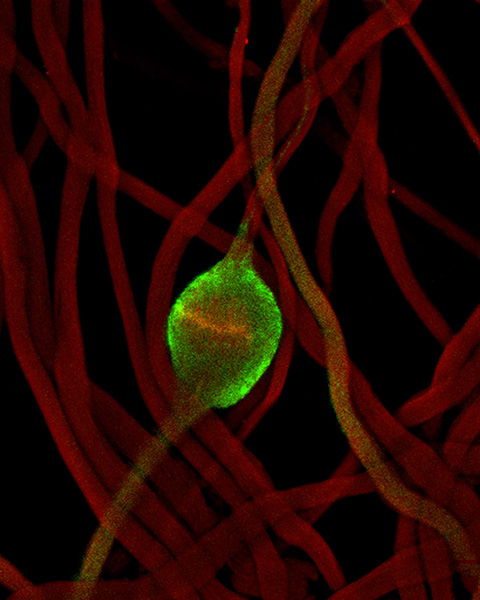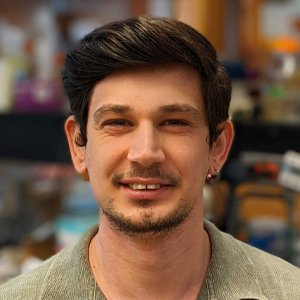How lipid metabolism shapes sperm development
Sperm cells are among the most specialized in the body, designed for a single purpose: fertilization. Each carries DNA and propels itself toward an egg using a whip-like tail called a flagellum. Inside the testes, sperm develop through several well-defined stages, acquiring the structures and molecules needed for fertilization.

One crucial part of this transformation is the production of seminolipids, specialized fats found in developing sperm that are essential for their formation and function. Seminolipids are synthesized by fatty acyl-CoA reductase, or FAR, enzymes. Mammals have two different FAR enzymes, FAR1 and FAR2.
Although both FAR1 and FAR2 are known to synthesize fatty alcohols, their specific roles in seminolipid production had remained unclear. To pinpoint which enzyme was responsible, Ayano Tamazawa and colleagues at Hokkaido University analyzed mice lacking Far1 and Far2 to clarify their roles in seminolipid production and spermatogenesis. They found that loss of Far1 led to a dramatic decrease in seminolipids and impaired sperm development. The study was published in the Journal of Biological Chemistry.
Tamazawa said the findings show how the loss of seminolipids disrupts spermatogenesis, emphasizing the critical role of ether linkages in sperm development.
Seminolipids are categorized by the types of alkyl and acyl chains they contain, which differ in length and saturation. The most common seminolipid in the testis is O-C16:0/C16:0. Using liquid chromatography–tandem mass spectrometry, or LC–MS/MS, the researchers mapped the exact structure of these lipids.
High-resolution lipidomics analysis of seminolipids and SGalDAGs (3-sulfogalactosyl-1-acyl-2-acylglycerols) showed that both lipid types have similar side chains composed of saturated acyl or alkyl groups. The main difference is that SGalDAGs have a 1-acyl group, whereas seminolipids have a 1-alkyl group.
“This finding is unique because SGalDAGs have never been characterized in detail in the testis,” Tamazawa said.
However, the precise mechanisms by which seminolipids contribute to spermatogenesis, and why the C16:0/C16:0 structure predominates, remain unknown.
The researchers suggest that understanding seminolipid function could inform new diagnostic or therapeutic strategies for male infertility, potentially leading to lipid supplements or biomarkers.
Enjoy reading ASBMB Today?
Become a member to receive the print edition four times a year and the digital edition monthly.
Learn moreGet the latest from ASBMB Today
Enter your email address, and we’ll send you a weekly email with recent articles, interviews and more.
Latest in Science
Science highlights or most popular articles

Bacteriophage protein could make queso fresco safer
Researchers characterized the structure and function of PlyP100, a bacteriophage protein that shows promise as a food-safe antimicrobial for preventing Listeria monocytogenes growth in fresh cheeses.

Building the blueprint to block HIV
Wesley Sundquist will present his work on the HIV capsid and revolutionary drug, Lenacapavir, at the ASBMB Annual Meeting, March 7–10, in Maryland.

Gut microbes hijack cancer pathway in high-fat diets
Researchers at the Feinstein Institutes for Medical Research found that a high-fat diet increases ammonia-producing bacteria in the gut microbiome of mice, which in turn disrupts TGF-β signaling and promotes colorectal cancer.

Mapping fentanyl’s cellular footprint
Using a new imaging method, researchers at State University of New York at Buffalo traced fentanyl’s effects inside brain immune cells, revealing how the drug alters lipid droplets, pointing to new paths for addiction diagnostics.

Designing life’s building blocks with AI
Tanja Kortemme, a professor at the University of California, San Francisco, will discuss her research using computational biology to engineer proteins at the 2026 ASBMB Annual Meeting.

Cholesterol as a novel biomarker for Fragile X syndrome
Researchers in Quebec identified lower levels of a brain cholesterol metabolite, 24-hydroxycholesterol, in patients with fragile X syndrome, a finding that could provide a simple blood-based biomarker for understanding and managing the condition.

